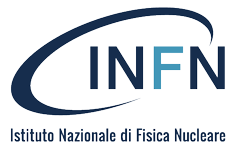IRIS' INNOVATIVE CABLE FOR ENERGY SAVING

AS PART OF THE IRIS PROJECT, FUNDED BY THE PNRR, INFN AND ASG SUPERCONDUCTORS ARE WORKING ON A 1GW SUPERCONDUCTING CABLE FOR THE TRANSPORT OF ENERGY WITHOUT DISPERSION AND WITH A REDUCED ECOLOGICAL FOOTPRINT
Research and industry together to develop innovative solutions for science, energy and the environment: the National Institute of Nuclear Physics (INFN) and ASG Superconductors are pooling the expertise and skills of those working at the frontier of scientific and technological research and those involved in industrial development and the production of advanced technologies, to develop the highest-performance superconducting cable ever made in Italy.
The new synergy between INFN and ASG Superconductors was born thanks to IRIS (Innovative Research Infrastructure on applied Superconductivity), a project financed with funds from the National Recovery and Resilience Plan-NextGenerationEU allocated for research infrastructures by Mission 4 of the Ministry of Universities and Research (MUR). ASG Superconductors was awarded the main tender for the IRIS project by the INFN, which is the promoter and project leader.
The aim of IRIS is the creation of a nationwide infrastructure capable of developing innovative technologies for environmental sustainability. These are superconducting technologies with a higher temperature than conventional ones, and a higher magnetic field. They are used both in fundamental research, to build the magnets of next-generation particle accelerators, and in other fields, such as energy, where they can be used to make high-power cables for sustainable transport, without dissipating energy in the form of heat.
To achieve this goal, IRIS will build a prototype of a cable made of an innovative high-temperature superconducting material, magnesium di-boride (MgB2), and an infrastructure to validate this and other technological solutions, introducing standards (ISO, IEEE, IEC, etc.) that are fundamental for the entry and dissemination of new technologies in society. IRIS thus represents a unique opportunity to take a concrete step forward in the TRL (Technology Readiness Level) of superconducting power transport technologies.
'The superconducting technology based on MgB2 has already been tested at CERN as part of HiLumi-LHC, the project to upgrade the large particle accelerator LHC. With IRIS, we are taking this a step further by developing it for the sustainable transport of large electric power. For this purpose, magnesium di-boride offers an important advantage: it allows the use of cryogenic temperatures that are much more accessible than the extreme cold required by, for example, the superconducting magnets of the LHC. This makes this technology suitable for energy-saving industrial developments,' comments Lucio Rossi, IRIS project leader, professor at the Università Statale di Milano and research associate at INFN. ‘Once again, the combination of research and technological development confirms itself as the engine of innovation in a society based on sustainable development. ‘
ASG Superconductors will play a strategic role for IRIS, because it will be responsible for the design, production and qualification of the prototype cable, which will be 130 metres long and will be tested at the Test Facility for Large Magnets and Superconducting Lines in Salerno, a laboratory run by INFN and the Physics Department of the University of Salerno, with the participation of CNR's SPIN Institute (Institute for SuPerconductors, INnovative materials, and devices).
‘To achieve the green deal, new clean energy sources are needed, but it is also necessary to innovate the grid infrastructure to reduce dispersion to zero and reduce environmental impact,’ emphasises Marco Nassi, CEO of ASG Superconductors. ‘Superconductivity and, in particular, our MgB2 technology have already demonstrated their reliability, both in research projects and in the medical sector, and now, thanks to the IRIS project in which we are involved with a reference institute such as the INFN, they will become even more mature to transfer innovation and advantages to a key sector such as electricity grids and energy transport. I like to point out that in Italy there are very strong scientific and industrial skills, which make it possible to imagine a leading role for the country in the development of innovative networks on both a local and international scale,' Nassi concludes.
The goals of the green deal and decarbonisation could therefore be closer, and with much lower operating costs than traditional technologies, by innovating network infrastructure and improving the transport and storage of electricity, with near-zero dispersion, thanks to the use of this new technology.
Using cables based on the technology being developed by the IRIS project to transport electricity could reduce losses due to dissipation and dispersion by a factor of five compared to conventional lines. To give you an idea: assuming the use of a 1,000 km superconducting line transporting 3 GW of power (equivalent to about 5% of Italy's thermoelectric production), the equivalent of 150,000 tonnes of CO2 per year would be saved. And electromagnetic emissions and ground heating could also be reduced to zero, minimising the space needed to lay overhead lines or conventional cables, with great benefit for the environment and a significant reduction in construction and operating costs. Finally, the new technology will be fully compatible with the liquid hydrogen storage chain, as it can operate at the same temperature: the infrastructure will therefore be extremely efficient in terms of cooling costs and space occupied.
IRIS is an INFN-led project in collaboration with the CNR-SPIN, the “Statale University” of Milan, the University of Genoa, the Federico II University of Naples, the University of Salento and the University of Salerno.
The IRIS cable development project is worth over €12 million and will be completed by 2025.
INFN NATIONAL INSTITUTE OF NUCLEAR PHYSICS
The National Institute of Nuclear Physics (INFN) is the Italian research institute dedicated to the study of the fundamental constituents of matter and their interactions. The INFN carries out frontier research, both theoretical and experimental, in the fields of subnuclear, nuclear and astroparticle physics and technological applications, and has contributed substantially to the recent Nobel Prize-winning discoveries of the Higgs boson and gravitational waves. These research activities require the use of cutting-edge technologies that the INFN develops both in its own laboratories and in collaboration with industry, and that often lead to useful results for society.
ASG SUPERCONDUCTORS
ASG Superconductors is a leading company in the field of superconducting magnets and systems with over 60 years of history and experience in relevant international projects in the fields of fusion energy, particle physics, MRI and proton therapy.











